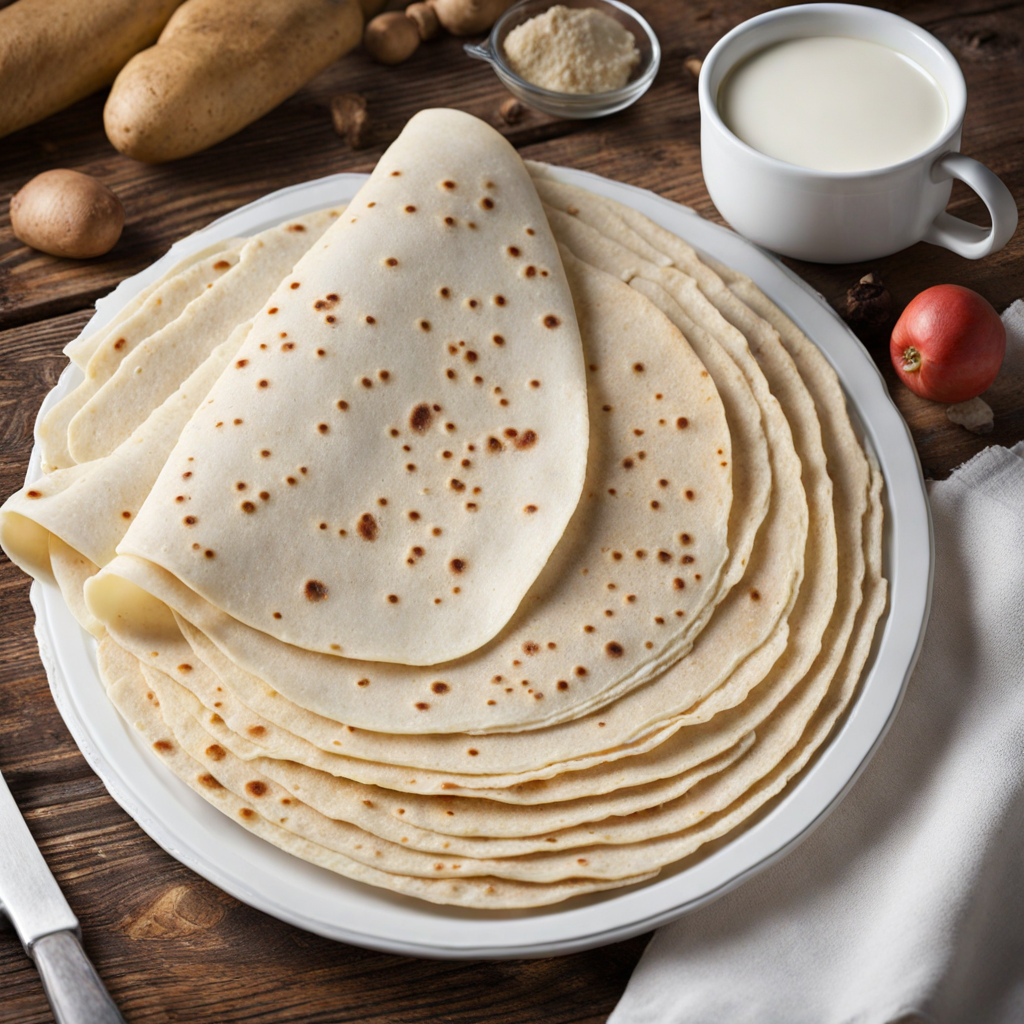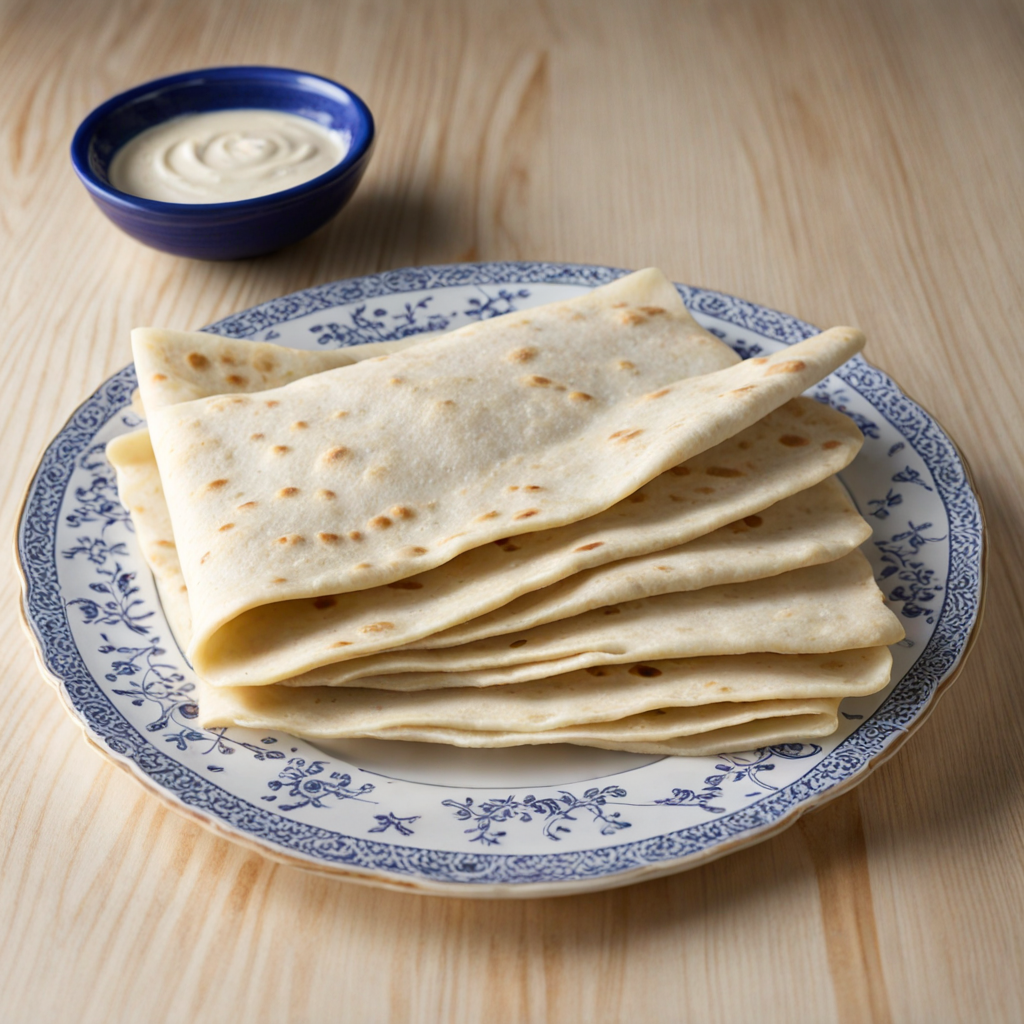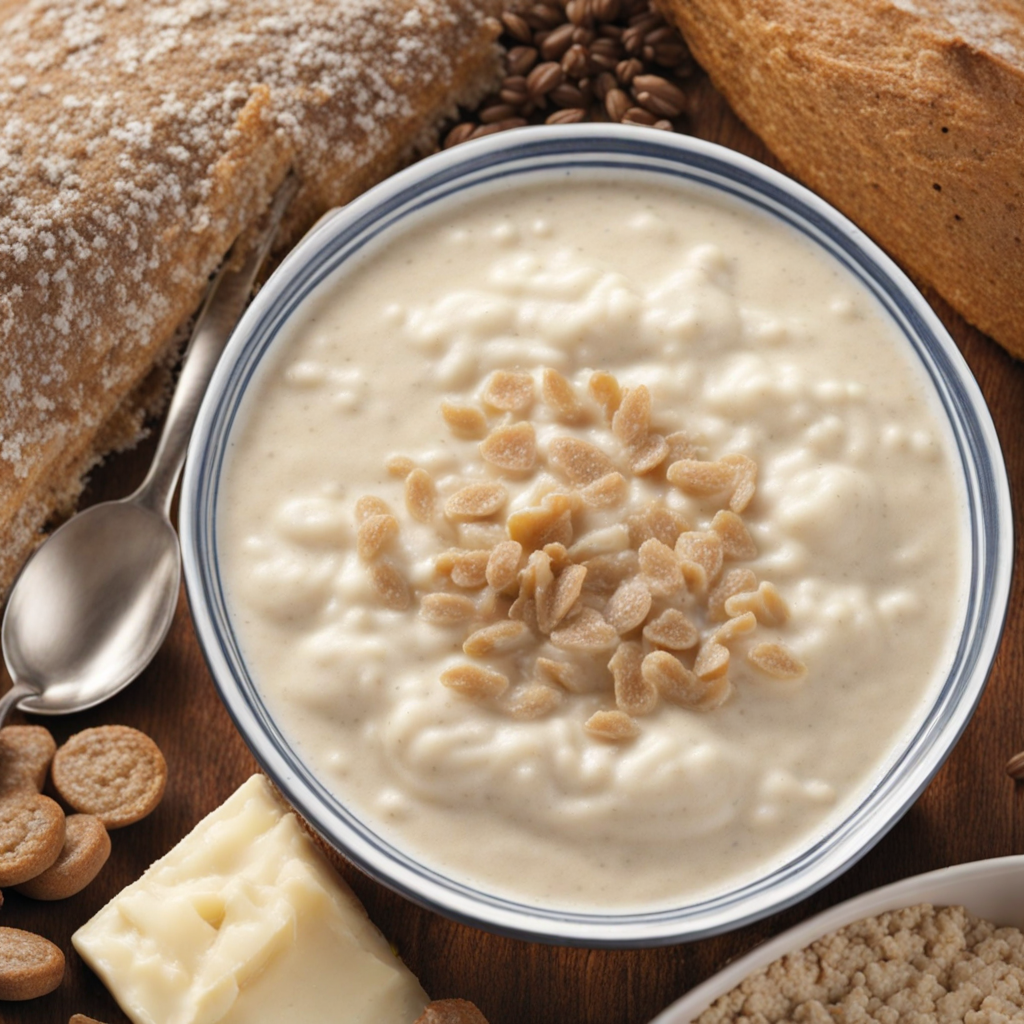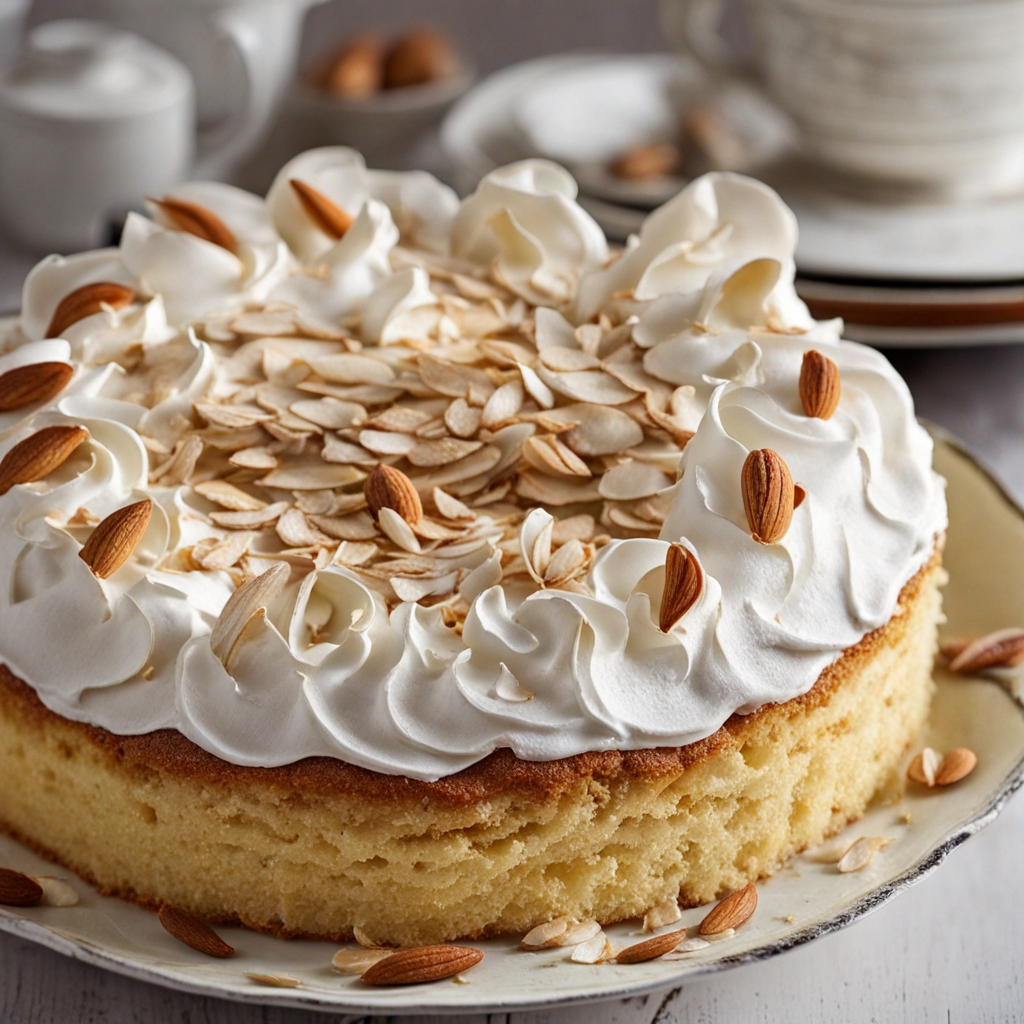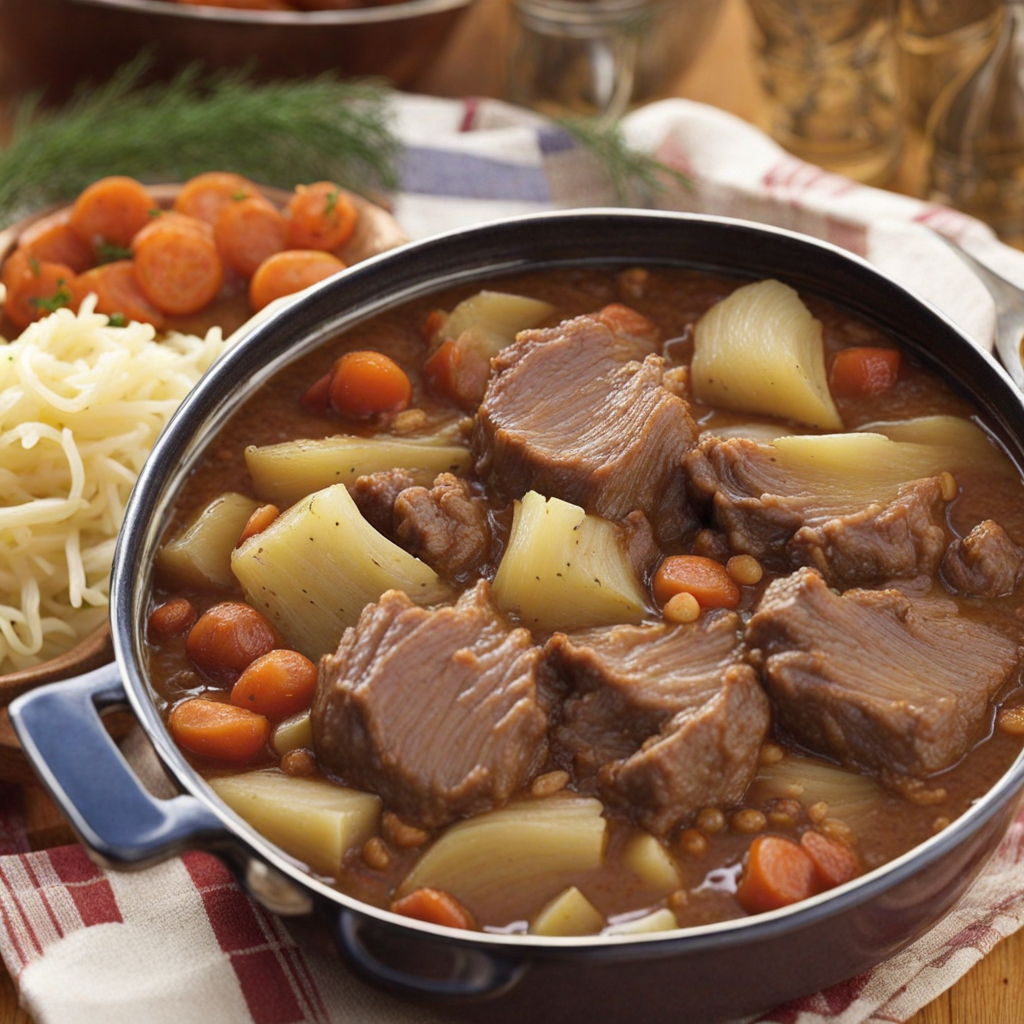Lefse
Lefse is a traditional Norwegian flatbread that holds a cherished place in the culinary heritage of Norway. This soft, thin bread is typically made from potatoes, flour, butter, and milk or cream, resulting in a unique texture and flavor that reflects the simplicity and resourcefulness of Norwegian cuisine. Historically, Lefse dates back to the 19th century, although its origins can be traced even earlier to the medieval period. It was initially made as a way to utilize leftover potatoes and is often associated with festive occasions, particularly during Christmas and other celebrations. The flavor of Lefse is subtly sweet and mildly savory, with a delicate potato taste that sets it apart from other flatbreads. The use of butter adds a rich, creamy note, while a hint of sweetness can come from the addition of sugar or cinnamon, especially in sweet variations. Lefse can be enjoyed in various ways; it may be served plain, or it can be filled with a variety of toppings such as butter and sugar, cinnamon, or even savory ingredients like cured meats or cheeses. The preparation of Lefse is a labor-intensive process that reflects the care and tradition involved in its making. First, potatoes are boiled and then riced or mashed until they are smooth. Once cooled, the potatoes are mixed with flour, a pinch of salt, and sometimes a dash of sugar, creating a pliable dough. The dough is then rolled out into thin rounds, ideally about the thickness of a tortilla, and cooked on a flat
How It Became This Dish
The History of Lefse: A Norwegian Culinary Treasure Lefse, a traditional Norwegian flatbread, is more than just a staple food; it is a cultural emblem, a connection to the land, and a testament to the resourcefulness of the Norwegian people. With roots tracing back centuries, lefse has evolved from a simple sustenance to a cherished delicacy, embodying the spirit of Norway's culinary heritage. #### Origins of Lefse The origins of lefse are shrouded in the mists of time, with historical references suggesting that the practice of baking flatbreads can be traced back to the Vikings, who flourished from the late 8th to early 11th centuries. These early Norsemen, known for their seafaring and exploration, powered their journeys with simple, portable foods. Flatbreads, made from various grains, were easy to prepare and could be stored for long periods, making them ideal for nomadic lifestyles. The word "lefse" itself is believed to derive from the Old Norse "hvefla," meaning "to turn" or "to flip," indicative of the cooking method employed. Traditionally, lefse was made with rye, barley, or oats, depending on regional availability, and was often baked on a hot stone or griddle. As agriculture developed in Norway, the introduction of potatoes in the 18th century revolutionized lefse-making. Potatoes became a staple crop, and their addition to the dough gave rise to new varieties of lefse that are celebrated today. #### Cultural Significance Lefse holds a special place in Norwegian culture, particularly during festive occasions. It is often associated with major celebrations such as Christmas, weddings, and national holidays. In many Norwegian households, the preparation of lefse is a communal activity, passed down through generations—a testament to family bonds and shared heritage. The act of making lefse is steeped in tradition. Families gather to roll out the dough, sprinkle flour, and cook the flatbreads on a "takke," a traditional griddle specifically designed for this purpose. Each family may have their own secret recipe, incorporating regional variations and personal touches. This communal effort not only nourishes the body but also strengthens familial ties and preserves cultural identity. Lefse is often enjoyed in various ways: spread with butter and sugar, filled with lingonberry jam, or served alongside savory dishes. It is a versatile food that can be adapted to suit different tastes, making it a beloved component of both everyday meals and special feasts. #### Development Over Time As Norway transitioned from a largely agrarian society to a modern nation, so too did the practice of lefse-making. In the 19th century, with the advent of industrialization and urbanization, many people moved away from rural areas, and traditional food practices began to change. Although some families continued to make lefse at home, the rise of commercial bakeries made it increasingly accessible to the wider public. In the early 20th century, lefse began to gain recognition beyond Norway's borders, particularly among Norwegian immigrants in the United States. These communities maintained their culinary traditions, bringing their beloved lefse recipes with them and adapting them to the new ingredients available in their adopted homeland. As a result, American lefse evolved, often using all-purpose flour instead of the traditional rye or barley, and sometimes incorporating sweeteners or flavorings that were not part of the original recipes. The popularity of lefse surged in the mid-20th century, particularly after World War II, as Norwegian Americans sought to reconnect with their heritage. Lefse-making became a symbol of cultural pride, and many communities held lefse festivals, where families would showcase their skills and share their unique recipes. These events fostered a sense of belonging and community among Norwegian Americans, creating a bridge between the past and present. #### Modern Lefse and Its Revival Today, lefse continues to be a cherished part of Norwegian cuisine, both in Norway and among the diaspora. While traditional recipes remain popular, modern variations have emerged, incorporating contemporary flavors and techniques. Gluten-free versions, for instance, have gained traction, catering to dietary needs without sacrificing the spirit of this beloved dish. In Norway, lefse is celebrated annually during the "Lefse Festival" in various regions, where bakers compete to create the best traditional lefse. This event not only highlights the artistry of lefse-making but also serves as a reminder of its cultural importance. The festival showcases the craftsmanship of bakers who have honed their skills over decades, emphasizing the blend of tradition and innovation. Social media has also played a role in the revival of lefse, with food bloggers and influencers sharing recipes and showcasing the art of lefse-making. This renewed interest has sparked a renaissance of traditional Norwegian foods, encouraging younger generations to engage with their culinary heritage. #### Conclusion Lefse is a remarkable example of how food can encapsulate history, culture, and identity. From its humble beginnings as a practical sustenance for Vikings to its status as a beloved delicacy in modern Norway and among Norwegian communities worldwide, lefse serves as a delicious reminder of the resilience and creativity of the Norwegian people. As families continue to gather around the kitchen table to make lefse, they are not merely baking bread; they are crafting memories, honoring traditions, and celebrating their heritage. In every bite of this soft, tender flatbread lies a story of survival, adaptation, and love—a story that transcends time and continues to nourish the spirit of those who cherish it. Whether enjoyed plain, sweet, or savory, lefse remains a testament to the enduring connection between food and culture, a culinary treasure that is as relevant today as it was centuries ago.
You may like
Discover local flavors from Norway


